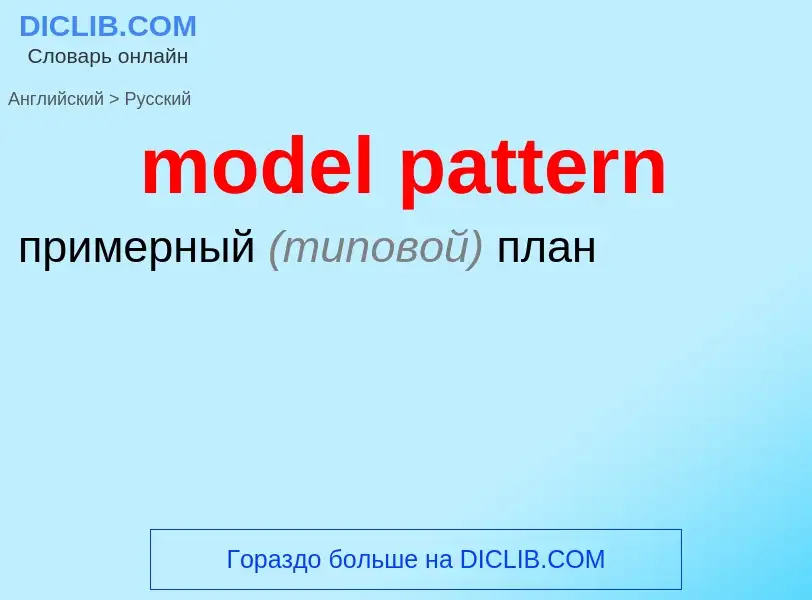Enter a word or phrase in any language 👆
Language:
Translation and analysis of words by ChatGPT artificial intelligence
On this page you can get a detailed analysis of a word or phrase, produced by the best artificial intelligence technology to date:
- how the word is used
- frequency of use
- it is used more often in oral or written speech
- word translation options
- usage examples (several phrases with translation)
- etymology
model pattern - translation to russian
SOFTWARE ARCHITECTURAL PATTERN FOR USER INTERFACES WHICH DIVIDES THE RELATED PROGRAM LOGIC INTO THREE INTERCONNECTED ELEMENTS TO SEPARATE INTERNAL REPRESENTATIONS OF INFORMATION AND HOW INFORMATION IS PRESENTED TO AND ACCEPTED FROM THE USER
Model view controller triad; Model view controller; Model/View/Controller; Model-View-Controller; Model View Controller; MVC Design Pattern; Model-view-controller design pattern; MVC model; MVC Pattern; Model-view; Model-Template-View; Model-view controller; Model-view-controller; MVC architecture; Model–View–Controller; Model-view-controller/; Model-View-Controller paradigm; Model, view, controller; MVC view; MVC controller; Model (MVC); View (MVC); Controller (MVC); Model-template-view
model pattern
примерный (типовой) план
pattern cutting
TEMPLATE FROM WHICH THE PARTS OF A GARMENT ARE TRACED ONTO FABRIC BEFORE BEING CUT OUT
Pattern making book; Pattern-making book; Patternmaking book; Sewing pattern; Dress pattern; Dress-maker's pattern; Pattern cutting; Pattern drafting; Pattern making
раскрой листового материала (операция)
pattern cutting
TEMPLATE FROM WHICH THE PARTS OF A GARMENT ARE TRACED ONTO FABRIC BEFORE BEING CUT OUT
Pattern making book; Pattern-making book; Patternmaking book; Sewing pattern; Dress pattern; Dress-maker's pattern; Pattern cutting; Pattern drafting; Pattern making
строительное дело
раскрой листового материала (операция)
Definition
pattern recognition
<artificial intelligence, data processing> A branch of
artificial intelligence concerned with the classification or
description of observations.
Pattern recognition aims to classify data (patterns) based
on either a priori knowledge or on statistical information
extracted from the patterns. The patterns to be classified
are usually groups of measurements or observations, defining
points in an appropriate multidimensional space.
A complete pattern recognition system consists of a sensor
that gathers the observations to be classified or described; a
feature extraction mechanism that computes numeric or
symbolic information from the observations; and a
classification or description scheme that does the actual job
of classifying or describing observations, relying on the
extracted features.
The classification or description scheme is usually based on
the availability of a set of patterns that have already been
classified or described. This set of patterns is termed the
training set and the resulting learning strategy is
characterised as supervised. Learning can also be
unsupervised, in the sense that the system is not given an a
priori labelling of patterns, instead it establishes the
classes itself based on the statistical regularities of the
patterns.
The classification or description scheme usually uses one of
the following approaches: statistical (or {decision
theoretic}), syntactic (or structural), or neural.
Statistical pattern recognition is based on statistical
characterisations of patterns, assuming that the patterns are
generated by a probabilistic system. Structural pattern
recognition is based on the structural interrelationships of
features. Neural pattern recognition employs the neural
computing paradigm that has emerged with neural networks.
(1995-09-22)
Wikipedia
Model–view–controller
Model–view–controller (MVC) is a software architectural pattern commonly used for developing user interfaces that divide the related program logic into three interconnected elements. This is done to separate internal representations of information from the ways information is presented to and accepted from the user.
Traditionally used for desktop graphical user interfaces (GUIs), this pattern became popular for designing web applications. Popular programming languages have MVC frameworks that facilitate the implementation of the pattern.



.jpg?width=200)
![Fitting a nettle/canvas-fabric on a [[dress form]] Fitting a nettle/canvas-fabric on a [[dress form]]](https://commons.wikimedia.org/wiki/Special:FilePath/Fitting muslin dummy.jpg?width=200)
.jpg?width=200)



![tailor's tack]] with thread to mark a pattern on fabric before cutting the fabric tailor's tack]] with thread to mark a pattern on fabric before cutting the fabric](https://commons.wikimedia.org/wiki/Special:FilePath/Basting pattern markings.jpg?width=200)

